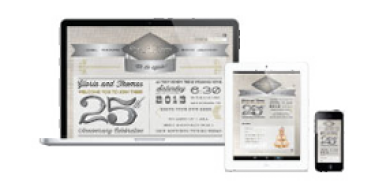How to Announce Your Firm's Name Change
You have a new company name. Congratulations. You may be thinking about how much work was involved: The brainstorming, the research, the emotional ups and downs that are inevitable in such an endeavor—whether you had exclusive control of the process or, more likely, were just one of several with an influence in the name ultimately chosen.
But guess what? You have a lot more work ahead. Introducing a new company name is not simply a matter of updating the logo on your website, a move that could lead to disastrous results. The last thing you want is to lose business or confuse your customers. At best, failure to plan will squander the positive publicity and energy you could have generated with good planning and effective execution of a well-timed announcement.
Exactly What Are You Announcing?
You're not out to just give folks a heads up that your name is changing. You need to put this in the context of how it's meaningful to them. Why was the firm's name changed in the first place? Chances are your message is somewhere in the answer to that question. But regardless of the reason, you'll want to find a positive story that connects with those who have an interest in your firm.
How does the name change reflect a shift in the firm's culture? How does the new name better align with your mission to help your clients? How will the name better reflect the firm's values. There's a bigger story here than a name change, and if you don't articulate it, you leave a wide open void to be filled with cynicism and mistrust.
Who Should Know, and When?
Your customers are just one audience to consider. Employees, partners, vendors and other organizations your firm may be involved with will also need to know, and by telling them in a thoughtful way you can best influence the outcome.
Best to start with employees. Not only do they deserve to know first, it's in the company's interest to have all team players on the same page. A name change is generally a pretty big deal, so a live gathering is best if you can swing it. There are any number of political and logistical factors here to consider, so I won't try to give you specifics on how to pull this off. But think, for example, about whether executives and managers should be informed prior to making a company-wide announcement. Consider how far in advance of the public announcement you should roll this out internally. There's no single path to success, but failure to think this through is a certain recipe for trouble.
Customers are generally your next priority. Here's an opportunity to make your best customers feel special. Call or visit them well before making the announcement more public. Tell them the story and why it was important to you that they know first. Communicating real-time, whether in person or on the phone, is one example of good account management.
By the way, breaking the news of a name change is a job to be shared by the firm's owners, partners and account execs. If you're in marketing, don't make this your job except where it makes sense because of the relationships you've forged. If your firm's leadership isn't on board with this sort of communication plan, it's your job to convince them otherwise.
While a phone call may not be in order for all your customers, some type of personalized communication may be warranted, even if it's just a personal email.
What about your partners, those firms with whom you tackle big projects together? Your vendors? The professional organization where you hold a board position? As with your customers, there's no good excuse for not sending personalized communications.
Teasing the Announcement
These are all "pre-announcements", of sorts. You're telling all the important people in your professional services firm's ecosystem of an impending change, and in doing so you're showing them how important they are by giving them advance notice.
You can, and probably should, also tease the upcoming change on your website. Think this one through, though. Unlike with those with whom you already have a relationship, visitors to your website don't necessarily need the full scoop. Part of the goal is still to avoid confusion in the eye of prospects, potential employees and partners. But you're using the upcoming "big event" as an opportunity to create interest and present your firm as a dynamic, evolving firm leveraging your most valuable digital asset. So once you've given notice to those who you deem most important to the firm, why not tease your name change with a more mysterious "Something big is happening" type of message. Once again, this is an opportunity to tell the story in a way that strengthens your brand. You're limited only by your creativity.
It's Announcement Day!
Now it's time for the announcement itself. It's time to tell the public. But how? Here are the main communication channels to consider:
Company Website
There's some chance that with a name change comes a brand new website design. That's great. But you'll undoubtedly be surprising many who came to the site expecting something entirely different. They may have even been redirected from a different URL. (You did remember to redirect traffic from the old domain, right?) So help these folks through the transition with messaging that speaks to the change. Like this, for example: "Welcome to Acme Engineering, formerly Smith and Sons."
Email is a perfect way to get an announcement out quickly and proactively for firms that have an active email list. By "active" I mean that Marketing is already communicating with these recipients on at least a quarterly basis—monthly, preferably—leveraging email best practices, including a quality email or automation platform. If your firm isn't doing this, I can tell you with confidence you are missing out on one of the highest-return marketing tactics you could be employing.
Don't overlook your corporate email system as an excellent medium to disseminate messaging about the name change. Every outbound message from the firm's employees can include transitional messaging in the email footer. For firms that don't have an IT-controlled footer, employees can be encouraged to include such messaging in their emails through a simple addition to their email signature.
Social Media
Thanks to social media channels, getting the word out to the rest of the world—beyond even the best-maintained corporate email list—is amazingly easy. While not as personal as email, the reach is unbeatable. For Announcement Day, your firm's profiles should all be updated with your new name and logo, along with any supporting imagery in the event of a brand makeover.
Unless your name change is only a slight change from the original, you may have to create a brand new LinkedIn Company Page. Check LinkedIn's guidelines, and don't wait until the last minute to do so. For firms that have to do this, you could very well need days or even weeks to complete the transition from one Company Page to another.
With profiles updated, announcements consisting of on-point messaging and supporting graphics can be scheduled appropriately.
Press Release
Press releases will have limited impact, but urban-based business-oriented newspapers still have a following, and getting your announcement printed here can reach a part of your audience—aging leadership that hasn't taken to social media—that might otherwise be missed. Such coverage will likely make it to a local paper's website, too, which might make for an interesting link to share with your email list in a future campaign.
How Long To Transition?
However you go about informing the world of your firm's name change, it's safe to say that repetition is a good thing. Starting with your activities leading up to the public announcement, and culminating in a period of transition-oriented messaging on the web and in your digital communications, you may be looking at a period of 3 to 6 months.
Do the Work
Events as significant as a name change are few and far between. Don't settle for letting it run its own course. Rather, plan ahead and do the hard work of leveraging it for all its worth. You'll get a far greater return in the long run, and mitigate the risk of unplanned headaches in the meantime. You've already done the part that takes courage. Now dig in, do the work required, and enjoy the spoils.
MONTHLY MARKETING INSIGHTS.
Get thought-provoking and actionable insights to improve how your firm makes a connection with your customers.






LEAVE A COMMENT